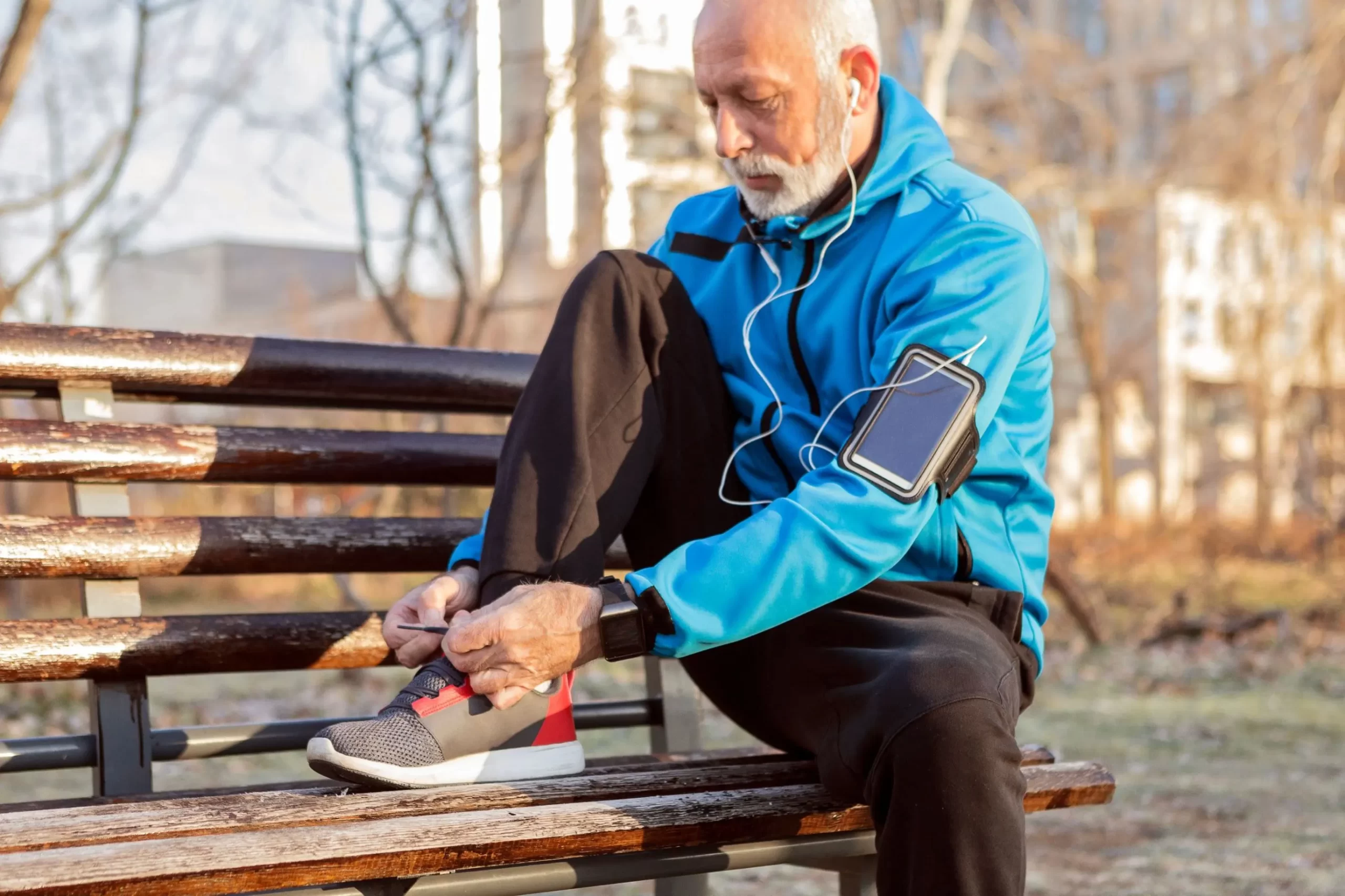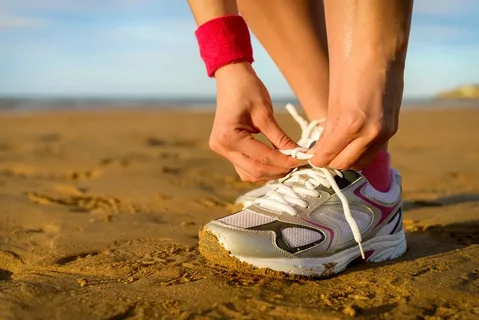As we age, our bodies change, and sometimes our feet take the brunt of the wear and tear. Finding comfortable footwear can be challenging for seniors – but it doesn’t have to be! Orthopedic shoes provide seniors with support and cushioning to ensure a comfortable stride. In this blog post, we’ll look at the best orthopedic shoes for seniors so that you can find a pair that will keep your feet comfortable and supported all day long.
The Benefits of Wearing Safe Shoes For Seniors
Our bodies undergo various changes as we age, which may lead to discomfort and mobility issues. One common area of concern is our feet, which can become swollen, sensitive, and prone to injuries. To prevent or alleviate these problems, seniors are often advised to wear orthopedic shoes. These special shoes are designed to provide the support, stability, and cushioning that aging feet need without compromising style or comfort.
There are many benefits of wearing safe shoes for seniors, including:
- Reduced risk of falls: Falls are a leading cause of injury among seniors and often occur due to poor balance, vision, or footwear. Orthopedic shoes can help improve stability, traction, and gait, reducing the risk of slips and falls.
- Better posture and alignment: As we age, our bones, muscles, and joints can shift or deteriorate, causing pain and posture problems. Orthopedic shoes can provide arch support, heel cushioning, and proper alignment, reducing stress on the feet, ankles, knees, and spine.
- Enhanced comfort and circulation: Swollen, tired, or numb feet are common among seniors, especially those with diabetes or poor circulation. Orthopedic shoes can offer extra width, depth, and padding, promoting healthy blood flow, reducing pressure points, and preventing blisters and calluses.
- Increased confidence and independence: Seniors who wear comfortable and safe shoes are more likely to feel confident and independent, as they can move around without fear of pain, discomfort, or injury. It can also improve their mood, social engagement, and overall quality of life.
How to Shop for Orthopedic Shoes?
Shopping for orthopedic shoes can be overwhelming for seniors and their caregivers, especially if they are unfamiliar with orthopedic footwear’s different types and features. Here are some tips to help you shop for the best orthopedic shoes:
- Get a Prescription: Getting a prescription for orthopedic shoes from a medical professional, such as a podiatrist or orthopedic surgeon, is always advisable. They can recommend the type of orthopedic shoe that best suits the individual’s foot conditions and provide guidelines for shoe fitting.
- Look for a Reputable Brand: Choose a reputable brand specialising in seniors’ orthopedic shoes. These brands offer various styles and sizes and are known for their high-quality materials and craftsmanship.
- Consider the Material: The material of the shoe is also an important consideration. Orthopedic shoes of soft, flexible leather or breathable mesh fabric can help prevent blisters, corns, and calluses and provide ample support and comfort.
- Check the Soles: The sole of the orthopedic shoe should be flexible and shock-absorbent, providing good traction and stability. Shoes with slip-resistant soles are essential for seniors at risk of falling.
- Look for Adjustable Features: Orthopedic shoes with adjustable features, such as Velcro straps or laces, can provide a customized fit and accommodate changes in foot size due to swelling or other conditions.
- Comfort Over Fashion: While style and fashion are important to some seniors, it is vital to prioritize comfort and safety over fashion when choosing orthopedic shoes. Choose shoes that fit well, provide support, and reduce foot pain and discomfort.
The Different Types of Orthopedic Shoes
Orthopedic shoes come in various styles and designs to suit different needs and preferences. Here are some of the most common types of orthopedic shoes available on the market:
- Athletic shoes – These are designed for people who engage in sports or other physical activities that require comfortable and supportive footwear. They have cushioned soles, arch support, and breathable materials to keep the feet cool and dry.
- Dress shoes – These are formal shoes that are designed to provide support and comfort without compromising style. They are made with soft, supple leather or suede and feature cushioned insoles, arch support, and wider toe boxes for extra comfort.
- Sandals – Orthopedic sandals are perfect for summer when your feet need more air to stay cool. They have adjustable straps that provide a customized fit, cushioned footbeds for added comfort, and slip-resistant soles to prevent slips and falls.
- Boots – Orthopedic boots are great for winter or for people needing extra support and foot protection. They have a sturdy sole, a wide toe box, and ankle support for better stability and balance.
- Slippers – Orthopedic slippers are perfect for wearing at home, especially for seniors who need comfortable and supportive footwear at all times. They have a non-slip sole, a soft and flexible upper, and a cushioned footbed for added comfort.
Features of the Best Orthopedic Shoes
Orthopedic shoes are designed to provide support, stability, and comfort to seniors with foot conditions such as arthritis, plantar fasciitis, and diabetes. Here are some features to look for when shopping for the best orthopedic shoes:
- Supportive Insoles: Orthopedic shoes should have supportive insoles that are cushioned and comfortable. These insoles should contour to the foot’s shape and support the arches.
- Wide Toe Box: Many seniors suffer from foot conditions that require a wider toe box to accommodate swelling and prevent discomfort. A wide toe box also allows for proper ventilation and airflow to the feet.
- Adjustable Straps: Orthopedic shoes should have adjustable straps that allow seniors to adjust the fit to their specific needs. These straps can be used to adjust the width and length of the shoe to provide a comfortable and secure fit.
- Shock Absorption: Many orthopedic shoes feature shock-absorbing technology that helps to reduce impact and pressure on the feet and joints. This feature is particularly beneficial for seniors who suffer from conditions such as arthritis or diabetes.
- Non-Slip Outsoles: Non-slip outsoles are a critical safety feature for seniors, as they reduce the risk of slips and falls. The outsoles should provide excellent traction and stability on all types of surfaces.
- Lightweight Materials: Orthopedic shoes should be made from lightweight materials that do not put additional stress on the feet. Seniors should look for shoes that are breathable, durable, and comfortable.
- Removable Insoles: Removable insoles are an important feature of orthopedic shoes, allowing seniors to customize their shoes to meet their specific needs. Seniors can remove the insoles to accommodate orthotics or inserts.
Comparing Different Types of Orthopedic Footwear
When shopping for orthopedic shoes, it’s essential to understand the different types available in the market. Each type of shoe caters to a specific need, so it’s critical to know what to look for when purchasing.
- Athletic Shoes – Designed for seniors with an active lifestyle, athletic shoes offer maximum support and cushioning to the feet. These shoes have a sturdy and non-slip sole that provides stability and reduces the risk of falling.
- Dress Shoes – Dress shoes come in different styles and designs, but all provide a combination of comfort and style. They have a firm sole that provides good arch support and helps to prevent fatigue, especially when standing or walking for long periods.
- Slippers – Slippers are designed to provide comfort and support for indoor use. They are made with soft, breathable material that allows the feet to breathe. Slippers come in different styles, including moccasin, clog, and booties, and they are perfect for seniors who spend most of their time indoors.
- Sandals are lightweight, airy, and perfect for summer. They come in different styles, such as open-toe, closed-toe, and slingback. Sandals have a contoured footbed that supports the feet, reducing heel pressure and arch pressure.
- Boots – Boots are designed to provide extra warmth and support during the colder months. They have a firm sole that offers good arch support and come in different styles, such as ankle-length, mid-calf, and knee-length.
 How to Maintain and Care for Orthopedic Shoes?
How to Maintain and Care for Orthopedic Shoes?
When caring for orthopedic shoes, taking proper steps to ensure they last as long as possible is essential. Here are some tips to help you maintain and care for your orthopedic shoes:
- Clean Your Shoes Regularly: Cleaning your shoes regularly is essential to keep them looking good and prolong their life. You can use a damp cloth to clean the shoes and remove dirt and stains.
- Keep Your Shoes Dry: After cleaning your shoes, make sure they are completely dry before wearing them again. Wet shoes can cause fungus or bacterial growth, which can lead to odours and infections.
- Use Shoe Trees: When you are not wearing your orthopedic shoes, use shoe trees to help maintain their shape and prevent them from creasing. This is particularly important for leather shoes.
- Store Your Shoes Properly: Store your shoes in a cool and dry place, away from direct sunlight or heat. If you don’t have a shoe box, you can wrap your shoes in tissue paper to prevent them from getting dusty.
- Avoid Harsh Chemicals: Harsh chemicals such as bleach or solvents can damage the material of your shoes. Stick to using mild cleaners or a soft brush to clean your orthopedic shoes.
Key Considerations for Selecting Shoes For Seniors
Choosing the right pair of Shoes For Seniors involves several considerations. Here are some key factors that you should keep in mind when shopping for orthopedic footwear:
- Fit: Proper fit is essential for both comfort and safety. The shoes should fit well without being too tight or too loose. Ensure that there is enough room for toes to move around and that the heels are snugly in place.
- Support: Orthopedic shoes are designed to provide extra support and cushioning to help seniors walk comfortably and prevent falls. Look for shoes that have built-in arch support, shock absorption, and non-slip soles.
- Flexibility: Shoes should be flexible enough to allow natural foot movements while walking or standing. Avoid stiff or rigid shoes that restrict movement and can cause discomfort or pain.
- Easy to Put On: Shoes that are easy to put on and take off can be a big help for seniors with limited mobility. Look for shoes that have adjustable straps or closures for a custom fit and easy accessibility.
- Lightweight: Heavy shoes can make walking more difficult for seniors. Choose shoes that are lightweight and easy to maneuver.
- Breathability: Feet can get hot and sweaty, particularly in warm weather. Look for shoes with breathable materials or mesh panels to allow air circulation and keep feet cool and dry.
Conclusion
As we age, our feet require more attention and care. Investing in a pair of orthopedic shoes can go a long way in providing the necessary support and comfort needed to maintain healthy feet.

